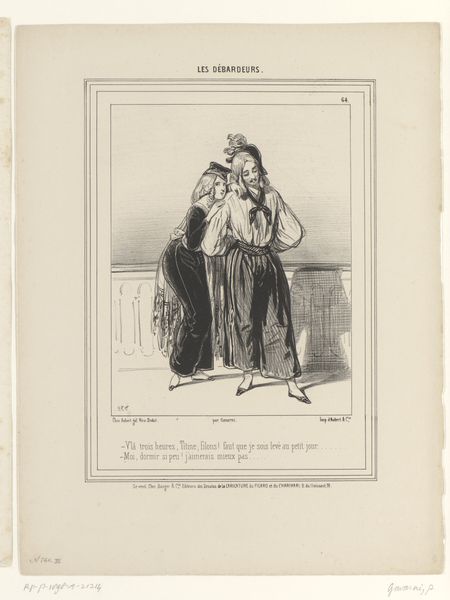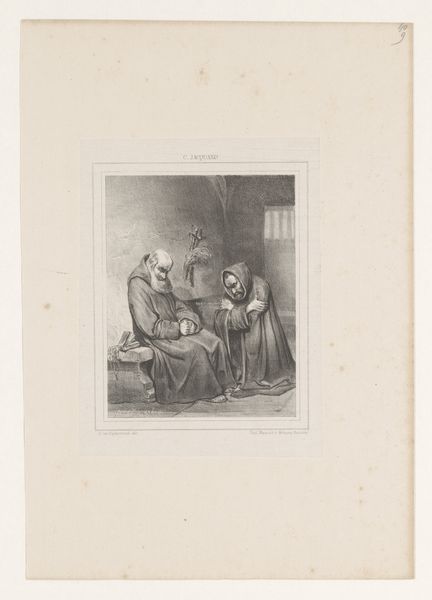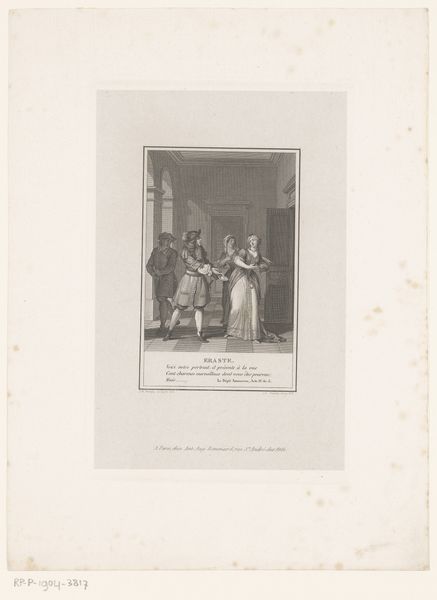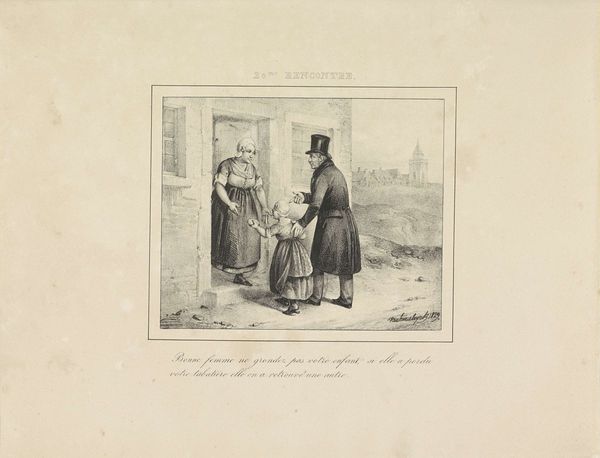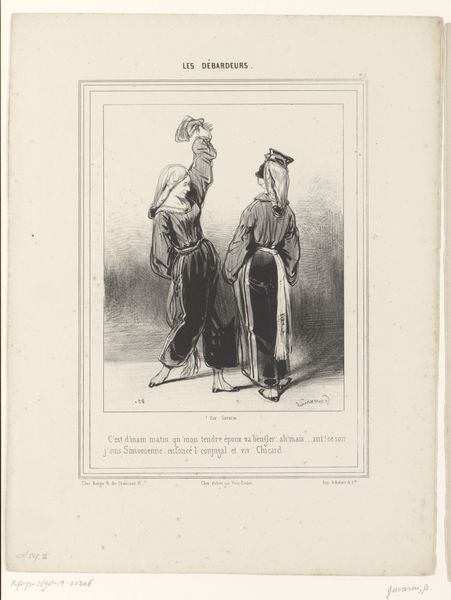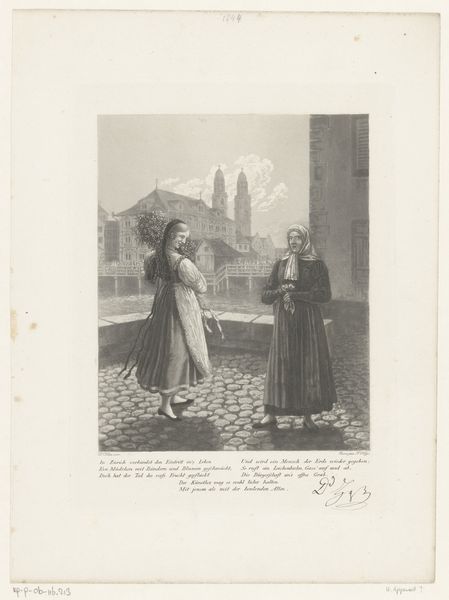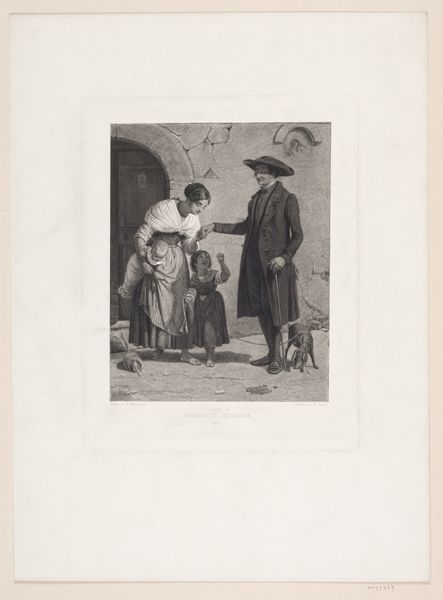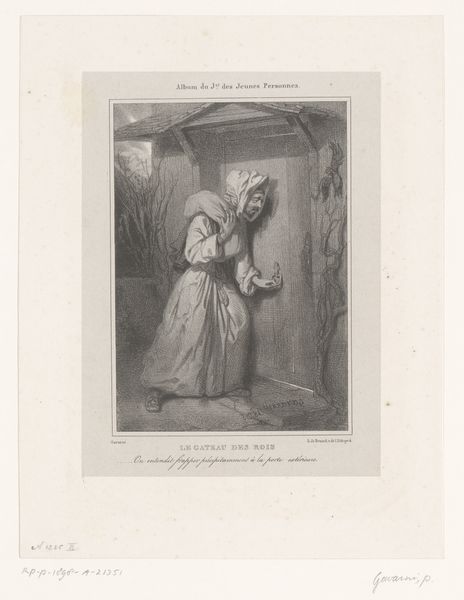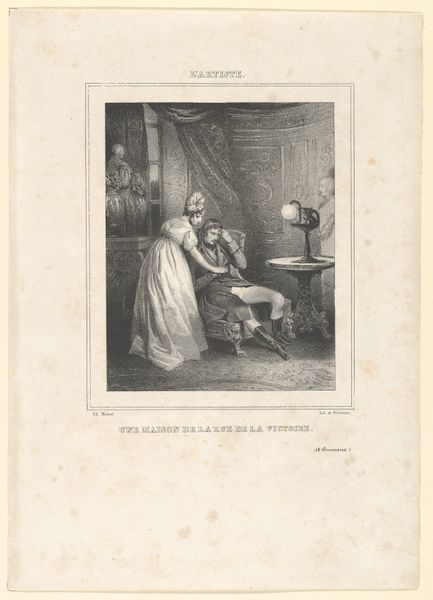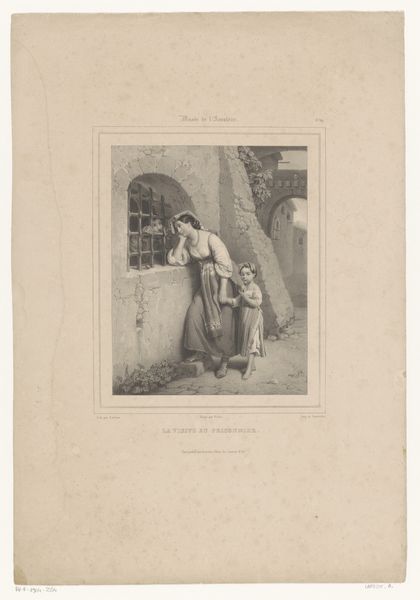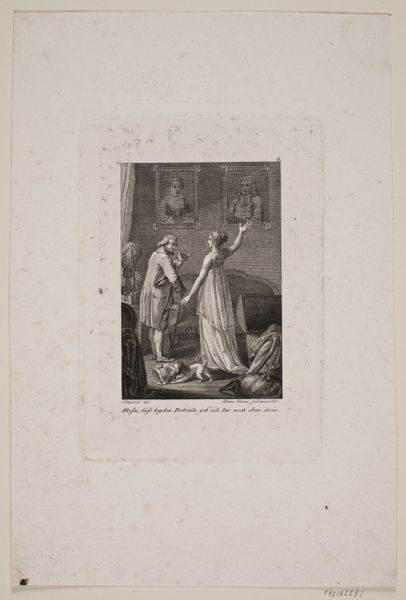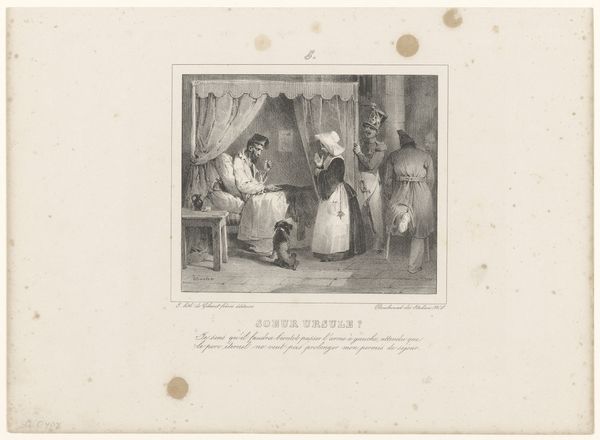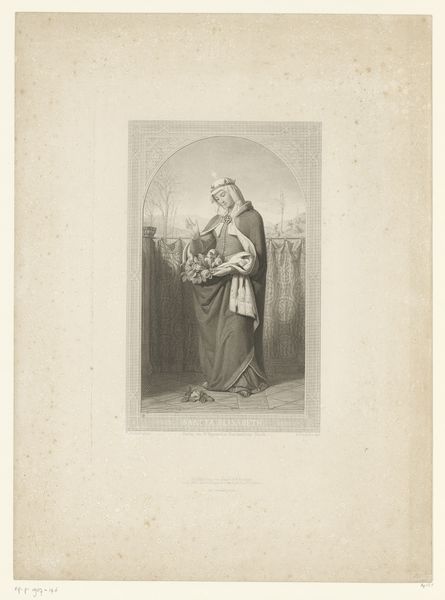
lithograph, print
#
portrait
#
narrative-art
#
lithograph
# print
#
caricature
#
romanticism
#
history-painting
Dimensions: height 445 mm, width 300 mm
Copyright: Rijks Museum: Open Domain
Curator: What strikes me about this lithograph, "Spotprent met Daniel O'Connell als Galileo" by John Doyle, from the mid-1840s, is the pointed comparison of Irish politics to Galileo's persecution. A charged image, indeed! Editor: There’s an immediate coldness to it, visually. The stark lines of the lithograph emphasize the bars of the window, the grim faces. The medium itself seems perfect for delivering this message of confinement. Curator: Exactly! O'Connell, the Irish politician, is cast as Galileo, imprisoned for his beliefs. Note the figures flanking him—presumably representing his inquisitors. It suggests a profound cultural memory, a symbolic weight being applied to contemporary Irish struggles. Editor: You know, the printmaking process itself is key. Lithography allowed for relatively quick and widespread reproduction of such political commentary. It’s a form of early mass media, using a readily available, if laborious, technology to challenge power. Curator: The artist cleverly draws parallels between Galileo's forced recantation of his scientific views and the pressures O'Connell faced in the political sphere, reflecting religious and state authority. The visual link to Galileo lends a timeless quality to the struggle for Irish rights. Editor: It’s intriguing how Doyle uses dress to code authority – those somber robes convey weight and oppression. We might also consider where these prints were consumed. Were they aimed at an elite audience, or a broader, perhaps less literate public that still understood visual satire? Curator: That’s a crucial point. Regardless, this artwork is a testament to the enduring power of images to critique power and encapsulate complex historical narratives through sharp, visually concise symbolism. Editor: Indeed, and understanding its creation through the lens of its materiality highlights how art functions as an active agent, not merely a passive reflection, in the turbulent currents of social and political change.
Comments
No comments
Be the first to comment and join the conversation on the ultimate creative platform.
